George W. Bush is not the first president to ask Americans to give more of themselves to volunteering. Except for Gerald Ford, every president since John F. Kennedy has called for greater volunteerism. Some calls have been resonant, others barely audible; some have produced new federal agencies; others, private initiatives. But whatever the form, volunteering has been a staple of presidential agendas since 1961.
The Presidential Call to Service
Kennedy’s call to service was the most eloquent and famous. Like Bush, Kennedy viewed volunteerism as essential to defending the nation in a time of great risk. “In the long history of the world, only a few generations have been granted the role of defending freedom in its hour of maximum danger. . . .The energy, the faith, the devotion which we bring to this endeavor will light our country and all who serve it-and the glow from that fire can truly light the world. And so, my fellow Americans: ask not what your country can do for you-ask what you can do for your country.”Kennedy’s Peace Corps was the first in a long list of federal programs to promote volunteerism. Lyndon Johnson followed Kennedy’s lead in 1964 when he signed the Economic Opportunity Act creating Volunteers in Service to America (VISTA). He also helped create the Retired and Senior Volunteer Program (RSVP), the Foster Grandparents Program, the Senior Companion Program, and the Small Business Administration’s Service Corps of Retired Executives (SCORE). But Johnson never issued a stirring national call to volunteerism; rather, he rooted his volunteerism in a handful of important, but small, federal initiatives. Ironically, of all Johnson’s efforts to draw young Americans into civic life, the Vietnam War probably did the most—albeit through marches, rallies, flag-burnings, and demonstrations.
Lyndon Johnson followed Kennedy’s lead in 1964 when he signed the Economic Opportunity Act creating Volunteers in Service to America (VISTA). He also helped create the Retired and Senior Volunteer Program (RSVP), the Foster Grandparents Program, the Senior Companion Program, and the Small Business Administration’s Service Corps of Retired Executives (SCORE). But Johnson never issued a stirring national call to volunteerism; rather, he rooted his volunteerism in a handful of important, but small, federal initiatives. Ironically, of all Johnson’s efforts to draw young Americans into civic life, the Vietnam War probably did the most—albeit through marches, rallies, flag-burnings, and demonstrations.
Richard Nixon may have boosted volunteerism more than any other president in modern history. Just four months into his administration, Nixon had created a Cabinet Committee on Voluntary Action and an Office of Voluntary Action within the Department of Housing and Urban Development and appointed a special consultant to the president on voluntary action. In November, he announced his “National Program on Voluntary Action”and then established the National Center for Voluntary Action, a nonprofit, nonpartisan private group, to pursue its goals.
Nixon also created an entirely new federal bureaucracy to administer the government’s growing collection of voluntary programs. In 1971, he placed the Peace Corps, VISTA, the Foster Grandparents Program, SCORE, all the volunteer programs in the Office of Economic Opportunity, and the Office of Voluntary Action within a new agency called ACTION. In late 1973 he signed the Domestic Volunteer Service Act, giving ACTION greater authority to design and implement new programs aimed at a wider range of audiences.
Jimmy Carter—perhaps surprisingly, given his own recent work promoting Habitat for Humanity—did not make voluntary service a centerpiece of his presidency, although he did reorganize ACTION halfway through his term to give the Peace Corps greater autonomy.
Ronald Reagan established the White House Office of Private-Sector Initiatives in 1981 in the belief that such initiatives would “accomplish far, far more than government programs ever could.”He said little more about volunteerism until 1986, when his May 24 radio address focused on the rising tide of volunteerism-“a reassertion of good, old-fashioned neighborliness now that our country has regained its self-confidence.”The next day he joined in the first “Hands Across America”antihunger rally, which stretched across the nation.
George H.W. Bush was more Nixonian in his approach to volunteerism. He launched his “Points of Light”volunteering initiative in 1989 to call all Americans, including corporations, schools, and places of worship, to claim society’s problems as their own and to help solve them. His call led directly to the creation of the private nonprofit Points of Light Foundation, which merged with Nixon’s National Center for Voluntary Action in 1991 and is alive and active today. Together with other nonprofits, the Points of Light Foundation connects citizens to volunteer opportunities and dispenses advice and research on best practices to make those opportunities as meaningful as possible.
Bill Clinton also did his share to promote federally sponsored volunteer service, placing his National and Community Service Trust Act at the top of his first-year agenda. The resulting Corporation for National and Community Service administers the AmeriCorps volunteer service program, the Senior Corps, and Learn and Serve America; it also absorbed all the programs of ACTION. And in April 1997 Clinton joined former presidents Bush, Carter, and Ford-not to mention Oprah Winfrey-in the Presidents’ Summit for America’s Future in Philadelphia. The summit produced a new nonprofit organization called America’s Promise to help children and youth.
Evaluations of Impact
George W. Bush’s recent call for volunteerism fits comfortably within the tradition established by Nixon, Reagan, and his father. His focus is on the traditional notion that individuals should give to their communities out of the goodness of their hearts, not because of government inducements, though he acknowledges that inducements through programs such as AmeriCorps have their place in the volunteering regime.
Bush’s call was unique in its specificity. He asked not just for community spirit, but for 4,000 hours of it. He set a measurable goal that every American can track by creating his or her own electronic journal on the Corporation for National and Community Service website. But Bush does not want just 4,000 hours of service. He wants Americans to get into the volunteering habit. Once past the first 4,000 hours, he hopes that volunteers will not stop.
Much as one can applaud the goal, however, little data suggests that presidents, past or present, have much weight when it comes to Americans’ decisions to volunteer. According to the University of California, Los Angeles, Higher Education Research Institute, for example, the number of freshmen who reported any type of volunteering has been going up 1-3 percent a year since 1989, with little variation that might be attributed to presidential activism.
None of this means that presidents should stop talking about volunteering or supporting federal programs such as AmeriCorps. The Corporation for National and Community Service reported a dramatic surge in website visits following the president’s State of the Union address. Online applications to AmeriCorps increased 50 percent in the month following the address, while the number of visits to the Senior Corps website jumped more than 130 percent.
But the research does suggest that something other than presidential goal-setting may be at work in prompting someone to decide to volunteer. Most important, it turns out, is making sure that volunteers are engaged by people they know and that their service allows them to make a difference.
The Service-Learning Effect
Ongoing research by the Higher Education Research Institute suggests that service learning has a powerful effect on volunteering. According to a January 2000 research-in-progress report, college students who enrolled in a service-learning course were particularly aware of the benefits of community service-probably, the authors surmise, because they discussed their service with each other and received emotional support from faculty. The study is based on a random sample of more than 22,000 undergraduates, most of whom entered college in the fall of 1994. Compared with students who did traditional community service, students in service-learning courses were more likely to develop a heightened sense of civic responsibility and personal effectiveness through their work.
All Volunteering Is Local
Parents, teachers, rabbis, and pastors may all have far greater sway over the decision to volunteer than presidents do. Presidents can certainly light the match, but others must fan the flame. The influence starts at home. A 2002 random-sample survey of 1,500 youths aged 15 to 25 conducted on behalf of the University of Maryland’s Center for Information and Research in Civic Learning & Engagement (CIRCLE) found that young Americans who discuss politics at home are much more likely to register to vote, trust government, believe politicians pay attention to their concerns, and say they can make a difference solving community problems. In fact, dinner-table conversations about politics are more strongly related to volunteering than are traditional demographic variables such as race, sex, education, and income. As CIRCLE concludes, “Parental socialization affects both whether young adults volunteer, and how often.”
The personal influence continues in connecting a diffuse readiness to volunteer with real opportunities. According to a 1997 random-sample survey of 1,002 youths aged 15 to 29 conducted for DoSomething, a national nonprofit that encourages community organizing, young Americans hear about volunteer opportunities with a community organization from a host of sources—dvertisements (66 percent), friends or family members (59 percent), teachers (54 percent), posters or flyers at school (48 percent), specific organizations (48 percent), places of worship (42 percent), jobs (38 percent), coaches, scout leaders or other local leaders (33 percent), and groups to which they belong (30 percent). Obviously, there is plenty of chatter out there on volunteering.
But not all sources produce results equally. Forty-two percent of young Americans who heard about a volunteering opportunity from a direct source (friend, family member, coach, scout leader, teacher, or the organization itself) volunteered-as against only 14 percent of those who heard from an indirect source (place of worship, job or employer, posters or flyers, and advertisements).
And the more contacts from direct sources, the greater the results. Just 14 percent of students who never heard from a direct source said they volunteered, compared with 25 percent who heard from one source, 41 percent who heard from two, 47 percent from three, and 62 percent from four. Just as in the CIRCLE study, volunteering is clearly related to social networks. Having a parent who is, or was, involved in community activity, as well as being a young person who attends religious services regularly, also increases volunteer experience.
All volunteering, it seems, is local. Presidents can opine all they wish about the need for greater engagement, but parents, friends, and the volunteer organizations themselves get the results.
The Chance to Make a Difference
To get Americans into the volunteering habit, though, it will not be enough to ask them to volunteer—or even to get them to show up for a first experience. The service itself must be meaningful or the volunteers will not come back.
According to the DoSomething survey, young Americans respond to programs that make good use of their time. Volunteers want to make a difference—make key decisions, see the effects of their work, gain valuable experience, skills, or contacts. Half of the DoSomething respondents who made key decisions rated their volunteer experience as excellent, compared with just 29 percent of those who did not; 46 percent who could see the impact of their work also rated their experience as excellent, as against just 15 percent who could not.
Although a lack of time is by far the most important reason cited by most young Americans for a decision to stop volunteering, frustration and a lack of meaning may also diminish future engagements. Without question, for example, the quality of their volunteer experiences affects the way students view future jobs in charitable organizations. According to a May 2002 random—sample survey of 1,015 college seniors, students who volunteered and rated their experience as very positive and found their skills and talents very well used were more likely than others to consider seriously a career in the nonprofit sector. For example, 23 percent of students who felt their skills and talents were very well used said they had seriously thought about a job in the nonprofit sector, compared with 10 percent of those whose skills and talents were not used well at all, and 0 percent who never volunteered at all. To the extent that interest in work in the nonprofit sector can be used as a surrogate for future interest in volunteering, these data suggest that the quality of the volunteer experience matters.
Strengthening the President’s Call
If President Bush wants Americans, especially young Americans, to meet his 4,000-hour goal, he might broaden his agenda to include three provisions related to this research.
First, he should ask Congress for more funding to promote more service-learning opportunities at the primary, secondary, and college levels. The federal Learn and Serve America program should be highlighted for the largest increase in funding possible. Congress would be well-advised to change the AmeriCorps job description to include an explicit commitment to recruiting and connecting volunteers at the local level.
Second, the president might encourage his Corporation for Community and National Service to enlist parents, peers, and organizations to help advertise and promote volunteering. Although young Americans do pay attention to flyers and conventional advertising for volunteering, they respond best to direct appeals from the people and organizations they already know.
Third, and perhaps most important, the president should ask Congress to provide limited grants to make sure that volunteers are wisely used by the organizations they serve. According to Leslie Lenkowsky, the chief executive of the Corporation for National and Community Service, the success of any call to service “needs to go beyond massing forces to figuring out how to deploy them most effectively.” One might add “and making sure they are wisely used.” The federal budget includes no money to build capacity in the nonprofit sector or within faith-based organizations. President Bush may well encourage more volunteers to show up, but it is up to the organizations they serve to provide the work needed for a longer engagement.

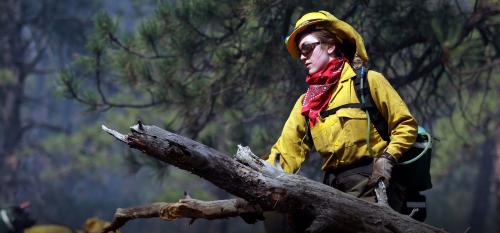
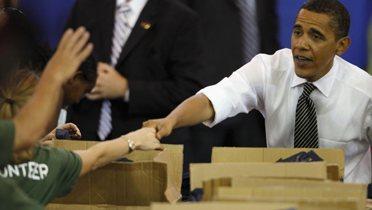
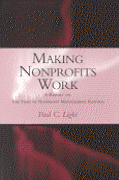
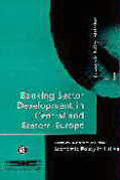
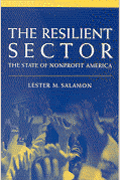
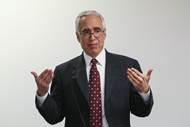



Commentary
The Volunteering Decision: What Prompts It? What Sustains It?
September 1, 2002